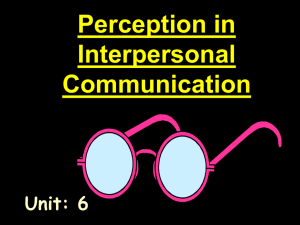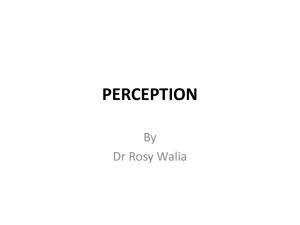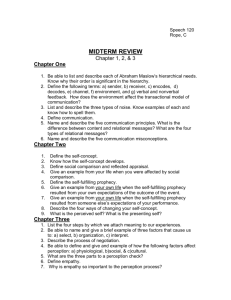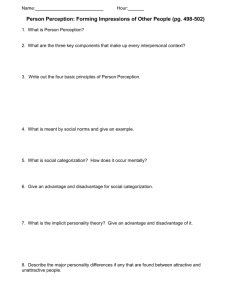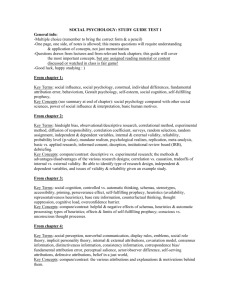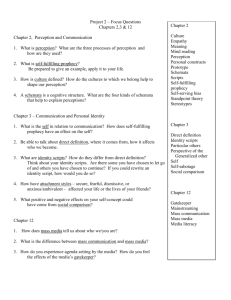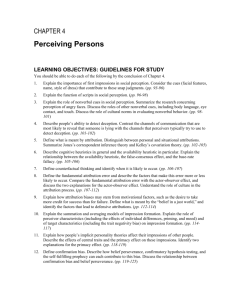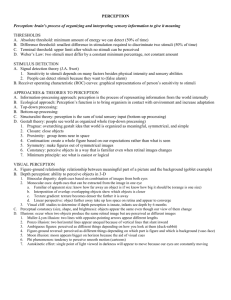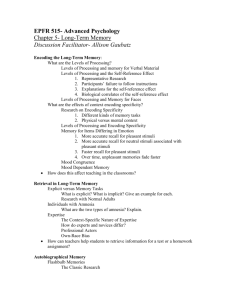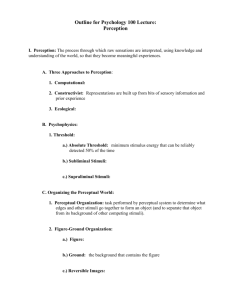Chapter 7
advertisement
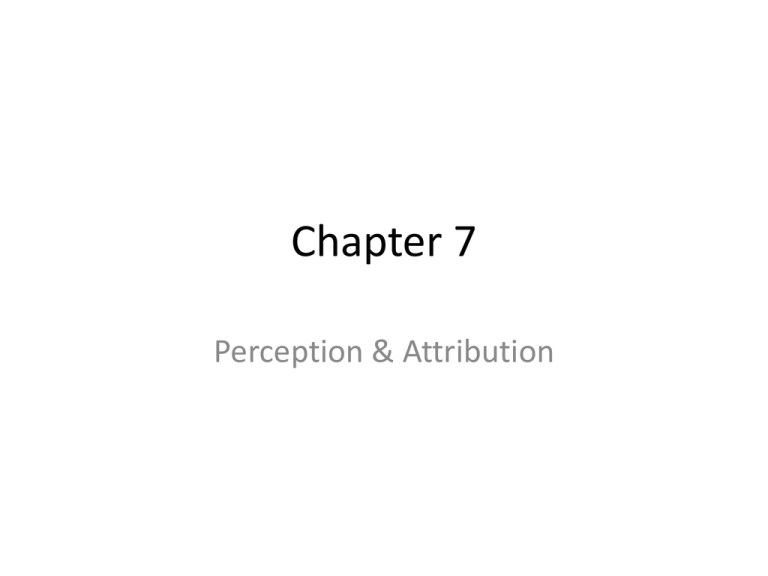
Chapter 7 Perception & Attribution Perception • Cognitive process by which we interpret and understand our surroundings • Social perception – how we make sense of ourselves and others Perception: An Information Processing Model Stage 1 Stage 2 Stage 3 Stage 4 Selective Attention/Comprehension Encoding and Simplification Storage and Retrieval and Response Retention A Competing environmental stimuli People Events Objects B C D E Interpretation and categorization A C Memory C Judgments and decisions F F 7-3 Stage I: Selective Attention/Comprehension • World is full of too much stimuli • No one can pay attention to it all • So, we select certain things to pay attention to and ignore the rest • Salient Stimuli – different, novel, noticeable • Tendency to pay more attention to negative stimuli Stage II: Encoding & Simplification • Raw sensory stimulus can’t be kept in memory – We have to encode it • Schema – mental picture or summary – Kept in an orderly fashion in your head – Connect new information to what you already know Why Individual Perceptions Differ • Your previous experiences have influenced the schemata that you’ve developed • Moods and emotions influence what we pay attention to and how we encode it • Recent cognitions influence your encoding • Individuals differences account for differences in encoding Stage III: Storage & Retention • Long term memory consists of related categories of thoughts • Event Memory – Script • Semantic Memory • Person Memory Stage IV: Retrieval & Response • Use information processed through perception to make decisions • Hiring decisions – Implicit cognition • • • • Performance Appraisal Leadership Communication Counterproductive work behaviors 7-9 Perceptual Errors 7-10 Stereotypes • An individual’s beliefs about the attributes of a group • Help us deal with having too much information to process • Can lead to poor decisions • Influenced by the amount of info. available & motivation to accurately process info. • Gender, age, race/ethnic, disability Self-fulfilling Prophecy • Pygmalion Effect – Someone’s high expectations for another person result in high performance • Galatea Effect – An individual’s high self-expectations lead to high performance • Golem Effect – Loss in performance due to low leader expectations A Model of the Self-Fulfilling Prophecy 5 Supervisor expectancy 1 Leadership Performance 6 2 4 Motivation 3 Subordinate selfexpectancy 7-13 Causal Attributions • People attempt to infer causes of observed behavior • Tend to be self serving & invalid • Behavior can be attributed to internal (something about the person) or external factors (something about the environment) Causal Attributions cont’d • Internal/external attributions are based on: – Consensus – comparison of an individual’s behavior with peers – Distinctiveness – comparison of an individual’s performance on one task vs. other tasks – Consistency – comparison of an individual’s performance on a task and previous performance on that task Attribution errors • Fundamental attribution bias – tendency to attribute other’s behavior to internal factors • Self serving bias – Success – internal – Failure – external
